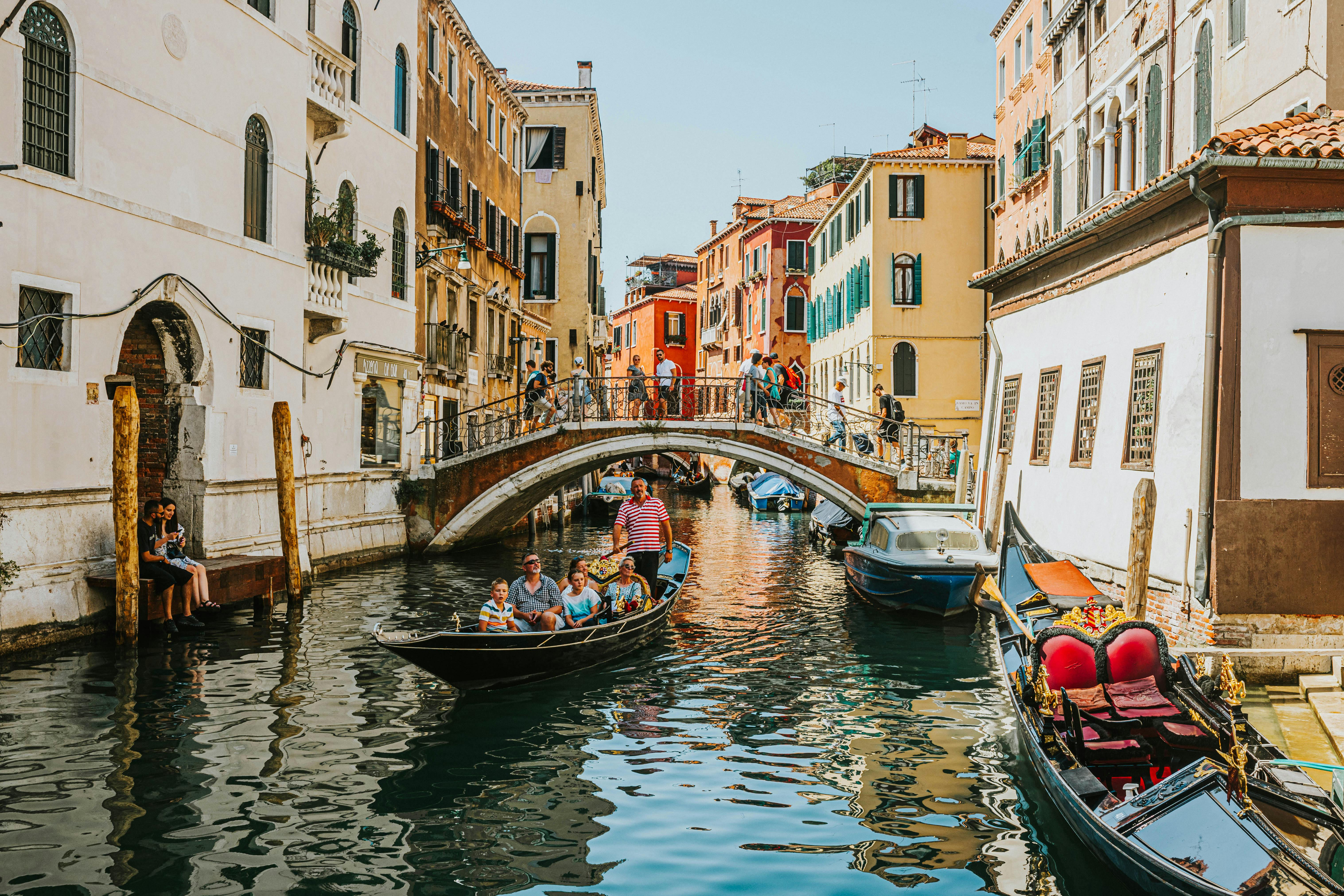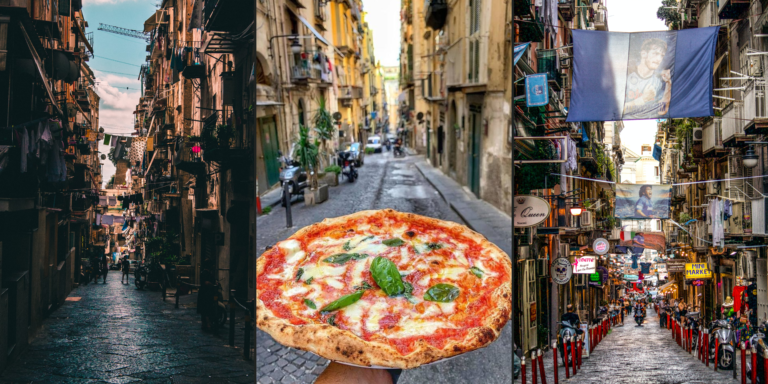Welcome to my comprehensive guide on the best ways to travel around Italy! Whether you’re planning a two-week adventure or have just 10 days to explore, I’ll provide information on the most common transportation options, public transport for tourists, traveling by train, getting around without a car, budget-friendly travel tips, must-visit destinations, top attractions, and insights into Italian culture and cuisine. With my help, you’ll have a memorable journey through Italy!
Key Takeaways
- Trains: Trains are the most convenient and efficient way to travel between Italy’s major cities, such as Rome, Florence, and Venice. Trenitalia and Italo are the two main train operators, offering a range of train types, including high-speed trains that can reach speeds of up to 300 km/h. Ticket prices vary depending on the route, travel time, and class of service.
- Buses: Buses are a more affordable alternative to trains, particularly for longer distances. While they may take longer to reach your destination, buses provide access to smaller towns and villages that may not be served by trains. Long-distance buses typically offer comfortable seating, air conditioning, and Wi-Fi.
- Cars: Renting a car offers the ultimate flexibility and freedom to explore Italy at your own pace. This is particularly beneficial for visiting rural areas, off-the-beaten-path destinations, and coastal regions. However, driving in Italy can be challenging due to narrow roads, traffic congestion, and assertive driving habits.
- Local Transport: Within cities, buses, trams, and metro systems provide efficient and affordable transportation. Tickets can be purchased at kiosks or from ticket machines. Taxis are also readily available in major cities.
- Water Taxis and Boats: In Venice, water taxis, gondolas, and Vaporetti (water buses) are the primary modes of transportation. These unique modes of travel offer a charming and authentic Venetian experience.
- Information: For comprehensive information on transportation options, schedules, and fares, visit the websites of the respective transportation providers:
Also Read Best Way to Travel in Spain: Train/Car/Bus/Boat Guide (2024)
Best Way to Travel Italy in 2 Weeks
Embarking on a two-week adventure through Italy requires careful planning to maximize your time and cover the top destinations. I recommend flying into Rome and spending three to four days exploring this bustling city, taking in iconic landmarks like the Colosseum and Vatican City.
Next, hop on a train to Florence, the birthplace of the Renaissance, where you can spend two to three days marveling at world-famous art in museums like the Uffizi Gallery.
From Florence, take a day trip to Pisa to see the famous Leaning Tower, then head south to the Amalfi Coast. Spend a few days exploring the stunning cliffs and coastline, taking in the picturesque towns of Positano and Ravello before making your way to Naples for a true Italian pizza experience.
Next, travel to Venice via train or plane and soak in the unique atmosphere of this city built on water with its canals, bridges, and gondolas. Lastly, head to Milan, a city renowned for its fashion and stunning architecture, and spend a few days exploring before flying back home.
2-Week Itinerary Summary
| Destination | Number of Days |
|---|---|
| Rome | 3-4 |
| Florence | 2-3 |
| Pisa (day trip from Florence) | 1 |
| Amalfi Coast | 3-4 |
| Naples | 1 |
| Venice | 2-3 |
| Milan | 2-3 |
No matter how you choose to explore Italy, be sure to savor the country’s exceptional cuisine, rich history, and stunning scenery. With a well-planned itinerary, you can experience the best of Italy in just two weeks!
Best Way to Travel Italy in 10 Days
If you only have ten days to travel in Italy, you can still have a fantastic experience. It requires planning and prioritizing your itinerary based on your interests. Here are some recommendations to make the most out of your trip:
Day 1-2: Rome
Start in Rome, Italy’s capital, and spend at least two days exploring the must-visit attractions. I suggest visiting the Colosseum, the Roman Forum, the Pantheon, and the Vatican Museums. Don’t forget to taste some of the traditional Roman cuisine, such as carbonara, amatriciana, and cacio e pepe.
Continue Reading Best Tourist Attractions In Rome Italy: Top Places (2024)
Day 3-4: Florence
Make your way to Florence, Tuscany’s historic center, by train. Spend two days visiting the Piazza del Duomo, the Uffizi Gallery, the Accademia Gallery, and the Ponte Vecchio. Florence is known for its delicious cuisine, so make sure to try some traditional dishes, such as ribollita, bistecca alla Fiorentina, and pappa al pomodoro.
Continue Reading Best Tourist Attractions In Florence Italy: Top Places (2024)
Day 5-6: Cinque Terre
Next, head to the scenic coastal area of Cinque Terre, made up of five picturesque towns along the Ligurian Sea. Spend two days hiking between the towns, tasting fresh seafood, and taking in the stunning views. Make sure to try the delicious local wine, Sciacchetrà.
Day 7-8: Venice
Travel to Venice, the romantic city built on water. Spend two days exploring the canals, St. Mark’s Square, and the Doge’s Palace. Take a gondola ride or sample some of Venetian cuisine, such as Risotto, Cicchetti, and Fritto Misto.
Continue Reading Best Tourist Attractions In Venice Italy: Top Places (2024)
Day 9-10: Milan
End your trip to Milan, one of Italy’s most fashionable cities. Spend two days visiting the iconic Duomo, the Galleria Vittorio Emanuele II, and the famous painting The Last Supper. Indulge in some of Milan’s famous dishes, such as cotoletta alla milanese, ossobuco, and panettone.
Continue Reading Best Tourist Attractions In Milan Italy: Top Places (2024)
Remember, this itinerary is just a suggestion. Feel free to add or subtract destinations based on your interests and travel style.
Most Common Transportation which are best ways to travel around Italy
Italy offers an extensive transportation network, making it easy for tourists to explore the country. The most common modes of transportation in Italy are:
| Transportation | Advantages | Disadvantages |
|---|---|---|
| Trains | Efficient and fast, connects major cities and towns, comfortable and affordable | Can be crowded during peak travel timesMay require transfers for some destinations |
| Buses | Offers scenic coastal views, and connects islands and coastal towns can be a fun and unique experience | Can be crowded during peak travel times and require transfers for some destinations |
| Ferries | Slower than trains may be uncomfortable for long journeys | Offers scenic coastal views, connects islands and coastal towns can be a fun and unique experience |
As you can see, each mode of transportation has its advantages and disadvantages. When deciding which option is best for your travel needs, consider factors such as your budget, travel time, and destination. Sometimes, a combination of transportation modes may be the most efficient and cost-effective option.
In the next section, I’ll provide useful information on using public transport in Italy for tourists.
Public Transport in Italy for Tourists
Italy’s efficient public transport system makes it easy for tourists to explore the country. Trains, buses, and ferries are the most common modes of transportation, and they operate on schedules designed to serve travelers.
Train Travel in Italy
Trains are the most popular mode of transport for long-distance travel in Italy. They are comfortable, reliable, and offer a scenic way to explore the country. The Trenitalia train network connects major cities in Italy and runs frequently. However, it’s advisable to book tickets in advance, especially during peak season, as trains can be crowded. Tourists can purchase tickets online, at train stations, or via the Trenitalia App. Be sure to validate your ticket before boarding the train, to avoid any fines.
Buses in Italy
Buses are the second-most popular transportation option in Italy, mostly for inter-city travel, and they are commonly used in smaller towns and villages. There are several bus companies in Italy, including FlixBus, which covers numerous destinations and offers affordable fares. Tickets can be purchased online, at bus stations, or via the FlixBus App.
Ferries in Italy
Italy has numerous coastal towns and islands, which can be accessed by ferries. This mode of transport provides a scenic way to explore Italy’s stunning coastlines while enjoying the sea breeze. Ferries run frequently, especially during peak season, linking popular destinations like Sicily, Sardinia, Capri, and Ischia. Tourists can purchase tickets online, at ferry stations, or via ferry company apps.
Tips for Using Public Transport in Italy
Here are some useful tips to consider when using public transport in Italy for tourists:
- Validate your train tickets before boarding. If you don’t, you could face a fine.
- Be punctual, as trains and buses in Italy run on time.
- Carry cash to purchase tickets on board buses, as some may not accept credit cards or other forms of payment.
- Download transportation apps to help you navigate the schedules and purchase tickets.
- Consider purchasing multi-journey passes or combined travel tickets when traveling frequently.
Traveling by public transport in Italy is an affordable, safe and convenient way to explore the country. All tourists should be able to move with ease from one destination to another while enjoying the beautiful sights and sounds that Italy has to offer.
Traveling Around Italy by Train
If you’re looking for an efficient and best ways to travel around Italy, you can’t go wrong with the country’s extensive railway network. Italy’s trains are known for being fast, frequent, and punctual, making them a reliable mode of transportation for both locals and tourists.
Benefits of Traveling by Train in Italy
One of the biggest advantages of traveling by train in Italy is the convenience it offers. Trains run regularly, making it easy to get from one destination to another quickly and efficiently. They also tend to be faster than other forms of transportation, such as buses or cars, especially when traveling long distances.
In addition, traveling by train in Italy is often more comfortable than other forms of transportation. Trains have spacious seating areas, air conditioning, and sometimes even food and beverage service. Many also offer free Wi-Fi, allowing you to stay connected during your journey.
Popular Train Routes in Italy
Italy’s rail network connects all major cities and towns, making it easy to travel between destinations. Some of the most popular train routes for tourists include:
- ROME TO FLORENCE: Taking the train from Rome to Florence is a popular and convenient way to travel between these two iconic Italian cities. The journey takes around 1.5-2 hours, and trains run frequently throughout the day.
- FLORENCE TO PISA: Another popular route is from Florence to Pisa, home of the famous Leaning Tower. Trains run regularly between these two cities, with the journey taking around an hour.
- VENICE TO MILAN: Traveling from Venice to Milan is another common route for tourists. The journey takes around 2.5-3 hours, and trains run frequently throughout the day.
Types of Train Tickets in Italy
Italy’s railway system offers several ticket options to suit different travel needs and budgets. Some of the most common ticket types include:
| Ticket Type | Description |
|---|---|
| Regional trains | These trains serve local routes and are the most budget-friendly option. Reservations are not required, and tickets can be purchased at train stations or online. |
| Intercity trains | These trains connect major cities and towns and are faster and more comfortable than regional trains. Reservations are required, and tickets can be purchased at train stations or online. |
| Eurostar Italia | These high-speed trains connect major Italian cities and offer a premium travel experience, with spacious seating areas, food and beverage service, and free Wi-Fi. Reservations are required, and tickets can be purchased at train stations or online. |
Tips for Traveling by Train in Italy
Here are some helpful tips to keep in mind when traveling by train in Italy:
- Book your tickets in advance to secure the best prices and avoid last-minute stress.
- Validate your ticket before boarding the train by stamping it in the yellow validation machine at the station.
- Keep your ticket with you at all times during the journey, as you may be asked to show it to a conductor.
- Be aware of your belongings and keep them with you at all times, especially in crowded train stations.
- If you’re traveling with heavy luggage, look for trains that offer luggage storage options to ensure a more comfortable journey.
Traveling around Italy by train is an excellent way to experience the country’s beauty and charm, allowing you to sit back and enjoy the scenic views. With a little planning and preparation, you can make the most of your train journeys and enjoy a hassle-free travel experience.
Getting Around Italy without a Car
Exploring Italy without a car may seem daunting, but don’t worry! Italy boasts an extensive public transportation system, which makes it easy to navigate the country’s bustling cities and charming towns. In this section, I’ll share practical advice on getting around Italy without a car, ensuring you can make the most of your time in this beautiful country.
Public Transportation in Cities
Italian cities are often best navigated by a combination of walking and public transportation. Many cities have excellent bus and metro systems that make it easy to get around. In larger cities like Rome and Naples, buses and metros run frequently, and it’s easy to purchase tickets at designated kiosks or machines located near the stops. In smaller cities, buses may run less frequently, so be sure to check schedules in advance.
If you plan on using public transportation frequently, it may be worth purchasing a multi-day pass, which is often more cost-effective. Be sure to validate your ticket before boarding and keep it with you throughout your journey as inspectors may ask to see it at any time.
Getting Between Cities
If you’re planning to travel between Italian cities, trains are often the best option. Italy’s train network is extensive, with high-speed trains connecting major cities like Rome, Florence, Venice, and Milan. Train tickets can be purchased online in advance or at the station on the day of travel.
Another option for traveling between cities is by bus. Italy has several bus companies that offer long-distance travel between cities and towns. While buses may take longer than trains, they are often cheaper and offer a more scenic route through Italy’s stunning countryside.
Walking and Biking
Exploring on foot is often the best way to experience the charm and beauty of Italy’s cities and small towns. Walking allows you to discover hidden gems and get a real feel for the local culture. Some cities, like Venice and Florence, are best explored entirely on foot due to their narrow streets and limited vehicle access.
If you’re feeling more adventurous, consider renting a bike to explore Italian cities and towns. Many cities, including Rome and Milan, offer bike-sharing programs, which make it easy to rent and return bikes at various stations throughout the city.
Traveling Between Cities in Italy
Italy’s well-connected cities make it easy to travel between them, and there are various modes of transportation to choose from. Whether you prefer to travel by train, bus, or plane, numerous options make inter-city travel a breeze. Here are some of the best ways to travel around Italy between cities.
Trains
Trains are a popular and efficient way to travel between cities in Italy. The country has an extensive rail network, and high-speed trains like the Frecciarossa and Italo can whisk you between cities in just a few hours. Train stations are usually located in the city center, making them easily accessible.
When traveling by train, it’s a good idea to book your tickets in advance to save money and secure your seat. You can book tickets directly through Trenitalia or Italo, or use a third-party booking site like Omio or Rail Europe. First-class tickets are more expensive but offer more comfortable seats and additional amenities such as Wi-Fi and complimentary drinks.
Buses
Traveling by bus is a budget-friendly option for getting around Italy, and many cities have regional and national bus services. Flixbus and Megabus are two popular bus companies that offer low-cost tickets between major Italian cities.
One downside of bus travel is that journey times can be longer compared to trains, and the bus station may be located outside of the city center. However, bus travel can be a great option if you’re on a tight budget or traveling to a smaller town where train service is limited.
Flights
If you’re short on time or traveling long distances, flying between cities can be a convenient option. Italy has several domestic airlines, including Alitalia, Ryanair, and EasyJet, that operate flights between major Italian cities.
It’s worth noting that flying can be more expensive than taking the train or bus, and airport transport can add additional time and cost to your journey. However, if you’re traveling to or from a destination that’s far from major cities, flying may be the only practical way to get there.
Driving
Renting a car is an option for those who prefer to travel at their own pace or explore Italy’s countryside. However, driving in Italian cities can be challenging due to narrow streets, limited parking, and traffic congestion.
If you do decide to rent a car, make sure to research parking options in advance and be aware of Italian driving laws, such as speed limits and the requirement to carry an International Driving Permit.
| Mode of transportation | Pros | Cons |
|---|---|---|
| Train | Efficient, fast, centrally located stations, comfortable seating, frequent departures | Expensive, limited seating options, may require booking in advance |
| Bus | Budget-friendly, good coverage of smaller towns, flexible schedule | Challenging driving conditions in cities, and limited parking, requires an International Driving Permit |
| Flight | Challenging driving conditions in cities, and limited parking, require an International Driving Permit | Longer journey times, and less comfortable seating, may require a transfer |
| Driving | Challenging driving conditions in cities, and limited parking, require an International Driving Permit | Expensive, limited luggage allowances, may require additional transport to the city center |
Regardless of which mode of transportation you choose, make sure to plan your inter-city travel ahead of time to ensure a smooth journey. Consider factors such as cost, convenience, and journey time when deciding on the best way to travel in Italy between cities.
Traveling Italy on a Budget
Traveling to Italy doesn’t have to mean breaking the bank. With some careful planning and budgeting, you can explore all of Italy’s beauty while keeping your expenses in check. Here are some tips on how to travel to Italy on a budget:
- Travel during the off-season: Visiting Italy during the peak season, from June to August, can be extremely expensive. Instead, consider traveling during the off-season, from November to April. Not only will flights and accommodations be cheaper, but you’ll also avoid the crowds.
- Choose budget-friendly accommodations: Opt for hostels, guesthouses, or budget hotels instead of fancy resorts or five-star hotels. You’ll save money and still have comfortable accommodation.
- Take advantage of free activities: There are plenty of things to do in Italy that won’t cost a dime. Visit public parks, churches, and museums that offer free admission, or take a self-guided walking tour of the city.
- Eat like a local: Italian food is delicious, but eating out at restaurants can add up quickly. Instead, shop at local markets and grocery stores and cook your meals in your hostel or guesthouse’s kitchen. You’ll save money and get a taste of authentic Italian cuisine.
- Use public transportation: Public transportation in Italy is affordable and efficient. Avoid taxis and private cars, instead take the bus or metro. You can even save by purchasing a multi-day pass for unlimited rides.
By following these tips, you can experience all Italy offers on a budget. Happy travels!
Best Way to Travel to Italy from the USA
If you’re planning a trip to Italy from the USA, you have several options for travel, including flights, layovers, and considerations to make for a smooth journey. Here are some tips to help you plan your trip.
Flying Directly to Italy from the USA
The most comfortable and convenient way to travel to Italy from the USA is with a direct flight. Several airlines offer nonstop flights from major US cities, including New York, Los Angeles, Miami, and Chicago, to cities such as Rome, Milan, and Venice. The duration of the flight is approximately 8-10 hours, depending on the departure and arrival cities.
| Airline | Departure City | Arrival City | Flight Time |
|---|---|---|---|
| Delta | New York | Rome | 8h 45m |
| Alitalia | New York | Milan | 9h 35m |
| United Airlines | Washington D.C | Rome | 9h 30m |
Layovers
If you’re looking for a more affordable option, you can opt for a flight with layovers. Popular layover cities include London, Paris, Frankfurt, and Amsterdam. While layovers can be an excellent opportunity to explore another destination, they can also be tiring and time-consuming, particularly for those traveling with children or senior citizens. It’s essential to choose a layover that allows enough time to clear immigration, collect luggage, and make it to the connecting flight.
Considerations for a Smooth Journey
Irrespective of the method of travel, it’s crucial to prepare for the journey ahead. To ensure a smooth and comfortable trip, follow these tips:
- Book tickets in advance to secure the best price and seats
- Keep your travel documents handy, including passport, visa, and relevant health documents
- Arrive at the airport well in advance to avoid last-minute rush and delays
- Stay hydrated during the flight and move around regularly to avoid health issues like deep vein thrombosis
Now that you know the best way to travel to Italy from the USA, start planning your Italian adventure today!
Must-Visit Destinations in Italy
Italy is a country of stunning beauty, rich history, and remarkable culture. From the magnificent mountains in the north to the sun-drenched beaches of the south, Italy has something for every traveler. Here are some must-visit destinations in Italy that should be on your itinerary:
- Rome – The Eternal City is home to some of the world’s most incredible historical sites, including the Colosseum, the Roman Forum, and the Pantheon. Don’t forget to indulge in the city’s delicious food and wine!
- Florence – Florence is the birthplace of the Renaissance and is home to many masterpieces of art and architecture, including the iconic Duomo.
- Venice – Known as the City of Canals, Venice is a unique and magical destination that will leave you spellbound. Take a gondola ride through the city’s waterways or visit the stunning St. Mark’s Basilica.
- Amalfi Coast – This stunning coastal area offers breathtaking views of the turquoise sea and colorful houses perched on cliffs. The picturesque towns of Positano, Amalfi, and Ravello are must-see destinations.
- Cinque Terre – This UNESCO World Heritage Site is a collection of five charming coastal villages perched on cliffs overlooking the Mediterranean. Each village is unique and offers stunning views of the sea.
- Tuscany – Tuscany is a region of rolling hills, vineyards, and quaint medieval towns. Visit the charming town of Siena, taste the famous wine in Chianti, or take a stroll through the stunning city of Pisa.
Also Read Best Tourist Cities In Italy: Top Attractions & Places in 2024
These are just a few of the countless incredible destinations to explore in Italy. Whether you’re interested in history, culture, food, or natural beauty, Italy has something to offer everyone. So pack your bags and get ready for a trip of a lifetime!
Top Attractions in Italy
Italy is a treasure trove of art, culture, and history, making it one of the most popular tourist destinations globally. Here are the top attractions that any visitor to Italy wouldn’t want to miss:
The Colosseum
An iconic symbol of ancient Rome, the Colosseum is a marvel of architecture and engineering. Tourists can get a glimpse of the gladiatorial games that were once held here and learn more about Roman history.
The Vatican Museums and Sistine Chapel
The Vatican Museums are home to an extensive collection of artwork, including the famous Sistine Chapel with its breathtaking frescoes painted by Michelangelo.
The Leaning Tower of Pisa
A UNESCO World Heritage Site and one of the most recognizable landmarks in Italy, the Leaning Tower of Pisa is a must-visit. Tourists can climb the tower, tilt their bodies for a fun photo, and take in stunning views of the city.
Venice Canals
Venice is famous for its picturesque canals and gondolas. A gondola ride through the narrow canals is a romantic way to explore the city, and tourists can enjoy the breathtaking architecture and vibrant culture of Venice.
The Uffizi Gallery
Art lovers will appreciate a visit to the Uffizi Gallery, one of the world’s most famous art museums. The gallery boasts an extensive collection of Italian Renaissance masterpieces, including works by Michelangelo, Botticelli, and Raphael.
Pompeii
One of the most famous ancient Roman cities, Pompeii is a fascinating archaeological site that offers a glimpse into life in ancient times. Tourists can explore the remains of temples, amphitheaters, and homes, and learn about the tragic eruption of Mount Vesuvius.
Italian Food
No visit to Italy is complete without trying the delicious food. Italian cuisine is diverse and renowned, from pizza and pasta to gelato and wine. Tourists can enjoy a culinary adventure and indulge in Italian flavors.
Must Read What to Eat and Where to Eat in Italy: Food & Eatery (2024)
Here are some of the most iconic Italian dishes that you won’t want to miss:
- Pizza: Pizza is a Neapolitan invention that has become a global favorite. It’s made with a simple dough topped with tomato sauce, mozzarella cheese, and your choice of toppings.
- Pasta: Pasta is another Italian staple. There are hundreds of different pasta shapes, each with its unique sauce. The most popular pasta dishes include spaghetti carbonara, lasagna, and ravioli.
- Risotto: Risotto is a creamy rice dish that is typically made with broth, butter, and cheese. It can be served with a variety of toppings, such as seafood, meat, or vegetables.
- Gelato: Gelato is Italian ice cream that is made with less air than traditional ice cream, resulting in a denser, richer texture. It’s often made with fresh fruit and other natural ingredients.
- Tiramisu: Tiramisu is a coffee-flavored dessert made with ladyfingers soaked in espresso, mascarpone cheese, and cocoa powder. It’s a rich and decadent treat that is perfect for ending a meal.
Travel Tips for Italy
Italy is a beautiful country with a rich history and culture. To make your trip to Italy a memorable one, I’ve compiled a list of essential travel tips:
1. Respect Local Customs
Italians place a great emphasis on manners and etiquette. When greeting someone, it’s customary to shake hands, make eye contact, and say “Buongiorno” or “Buonasera” depending on the time of day. When visiting churches and other religious sites, dress modestly and remove any hats or sunglasses.
2. Be Prepared for Crowds
Italy is a popular tourist destination, and many attractions can get crowded during peak season. To avoid the crowds, visit popular sites early in the morning or late in the afternoon. Also, consider traveling during the off-season when tourist traffic is less hectic.
3. Stay in Central Locations
When choosing accommodations, it’s best to stay in central locations near major attractions and public transportation. This will save you time and money on transportation, and allow you to explore the city at your own pace.
4. Learn Basic Italian
While many Italians speak English, it’s always helpful to know a few basic Italian phrases. This will make it easier to communicate with locals and make your trip more enjoyable.
5. Watch your Belongings
As with any popular tourist destination, pickpocketing can be a problem in Italy. Keep your belongings close to you, especially in crowded areas, and avoid carrying large amounts of cash or valuable items.
6. Try Local Cuisine
Italian cuisine is world-famous and a highlight of any trip to Italy. Don’t be afraid to try new dishes and explore local food markets. Italian cuisine varies from region to region, so be sure to try the local specialties wherever you go.
7. Use Public Transport
Italy has an efficient public transportation system, and it’s often the best way to get around. Trains and buses connect most cities, and there are also local buses and trams in larger towns and cities. Consider purchasing a multi-day transport pass to save money.
8. Plan for Major Attractions
Many major attractions in Italy require booking, especially during peak season. Be sure to book tickets online or through a travel agency to avoid long lines and disappointment.
9. Be Careful When Driving
If you choose to rent a car and drive in Italy, be prepared for narrow roads and aggressive drivers. Italian traffic laws can also be confusing, so be sure to familiarize yourself with them before hitting the road.
10. Enjoy La Dolce Vita!
Lastly, and most importantly, enjoy your trip to Italy! Take your time, soak up the culture, and savor every moment in this beautiful country.
Conclusion
In conclusion, Italy is a treasure trove of art, culture, and history, and these top attractions are a must-visit. Visitors to Italy can immerse themselves in Italian culture and cuisine, marvel at the iconic landmarks, and experience the vibrant lifestyle of this beautiful country.
FAQs
What is the best way to travel around Italy as a tourist?
According to Lonely Planet, Italy has an extensive rail network that spans the length of the country, meaning most major cities are connected by regular train services. Trains in Italy broadly fall into three main categories: Regionale, InterCity (IC), and Alta Velocità (AV). The vast majority of trains are run by Trenitalia, Italy’s national train operator, while a handful of high-velocity services are handled by privately owned Italo. Ranging from snow-capped Alpine peaks surpassing 4,000m in altitude to wild Mediterranean archipelagos, the diverse geography of the Italian peninsula doesn’t allow for one single mode of transport to move people around the country. Trains, buses, ships, and ferries all contribute to helping you reach your destination.
What is the best way to tour all of Italy?
According to US News Travel, guided tours are an efficient, hassle-free way to explore the country’s top attractions and cities. These Italy tours – considered the best by travelers and experts alike – vary by region, focus, and method of transportation, but they all have one thing in common: highly motivated and informed guides ready to help you better appreciate your time in this beautiful European country.
How do I travel around Italy on my own?
According to Untold Italy, public transport is an economical way to get around when traveling in Italy. Depending on the city, various options are available, including buses, trams, metro systems, and even boats. Single-use tickets can range from €1.50 to €5, while daily passes usually cost between €4 and €15.
What is the cheapest way to travel within Italy?
According to Lonely Planet, coaches are a cheaper form of transport in Italy, with a web of routes that stretches to all corners of the country. Tickets can be purchased online through bus company websites.







